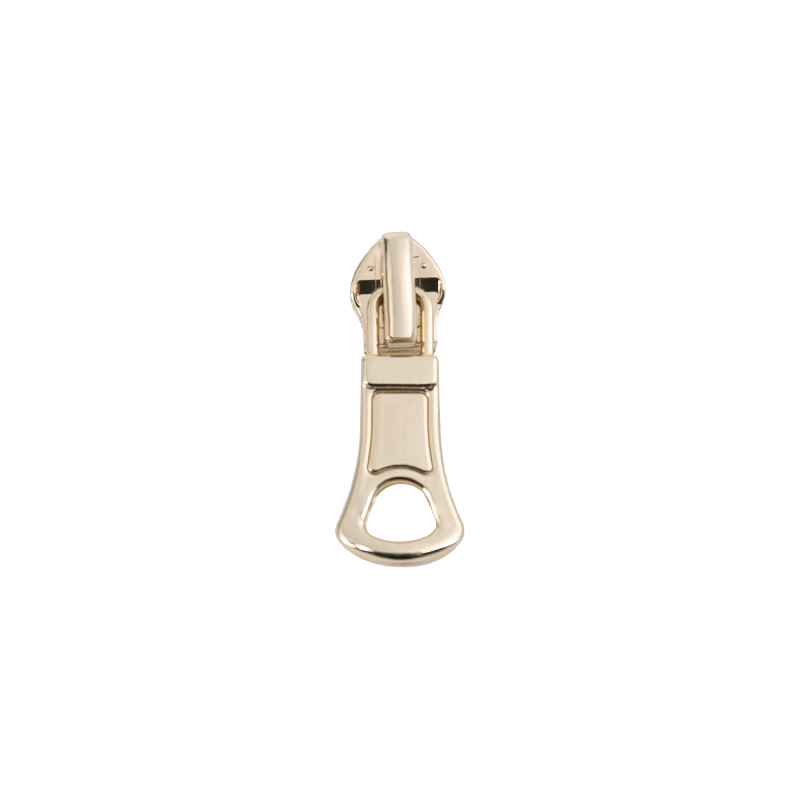The nylon zipper slider and zip ties are distinct components with different functions, so they are not typically used together in a direct compatibility scenario. Here's a detailed explanation of their roles and any potential interaction:
A nylon zipper slider is the small mechanism that moves up and down a zipper, interlocking or separating the zipper teeth or coils.Its primary function is to facilitate the opening and closing of zippers, typically made from materials like nylon, plastic, or metal.The slider is designed specifically to match a particular type of zipper (nylon coil, molded plastic, metal, etc.) and must be compatible with the teeth size and type to function smoothly.
Zip ties (also known as cable ties) are fastening devices used to bundle or secure items together. They are made from strong, flexible materials like nylon and have a self-locking mechanism.Zip ties are primarily used in applications like securing cables, organizing wires, or fastening objects temporarily or permanently.
While nylon zipper sliders and zip ties serve completely different purposes, there are a few potential ways they could interact or be used together in certain applications:
Zip ties can sometimes be used in emergency situations to fasten a zipper if the slider or zipper teeth become damaged. For instance, if a nylon zipper slider breaks, a zip tie could be threaded through the remaining zipper mechanism to pull the zipper closed temporarily. However, this is not a long-term solution and could damage the zipper further.
In cases where accessories like tags, small pouches, or decorative elements need to be temporarily attached to a bag or garment with a nylon zipper, zip ties can be used to secure these items to the slider or zipper pull.
Nylon zipper sliders are typically not designed to interact with zip ties in any structural or functional way. A slider’s primary function is to manipulate zipper teeth, and it lacks the locking mechanism or strength needed to secure or support a zip tie in any functional manner. The zip tie’s locking mechanism, meanwhile, is designed for securing objects together, not operating as a zipper mechanism.
Zip ties come in various sizes, and theoretically, a zip tie could be threaded through the pull tab of a nylon zipper slider for temporary use. However, this wouldn't improve or enhance the slider's performance or functionality; instead, it would only serve as a makeshift handle.
Using zip ties in any way with a nylon zipper slider can cause misalignment or interference with the smooth operation of the zipper. If the zip tie is too large or too rigid, it may get in the way of the zipper slider's movement, creating jams or making it difficult to zip up or down.Attaching zip ties too tightly to the nylon zipper slider or zipper teeth could cause damage. Zip ties are strong, and over-tightening could break the slider, warp the zipper teeth, or otherwise cause functional issues with the zipper.
In some industrial or outdoor applications, such as securing heavy-duty covers or protective enclosures, zip ties might be used alongside zippers. However, in these cases, the zip ties function as an additional fastening mechanism rather than being directly compatible with the zipper slider.
In terms of compatibility, the nylon zipper slider does not have a direct functional relationship with zip ties. Their purposes are fundamentally different—zip ties are for securing items, while nylon zipper sliders are for opening and closing zippers. While zip ties can occasionally be used in makeshift solutions involving nylon zipper sliders (such as temporary repairs or attaching objects), they are not compatible in a way that enhances or improves the performance of the nylon zipper slider. Therefore, their use together is generally rare and situational.


 en
en  русский
русский 한국어
한국어 get a free quote
get a free quote
















